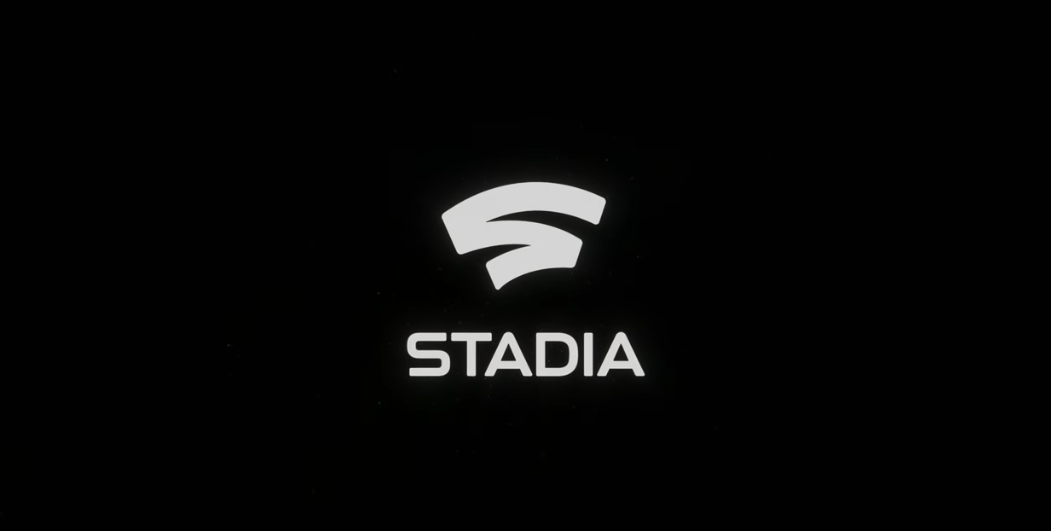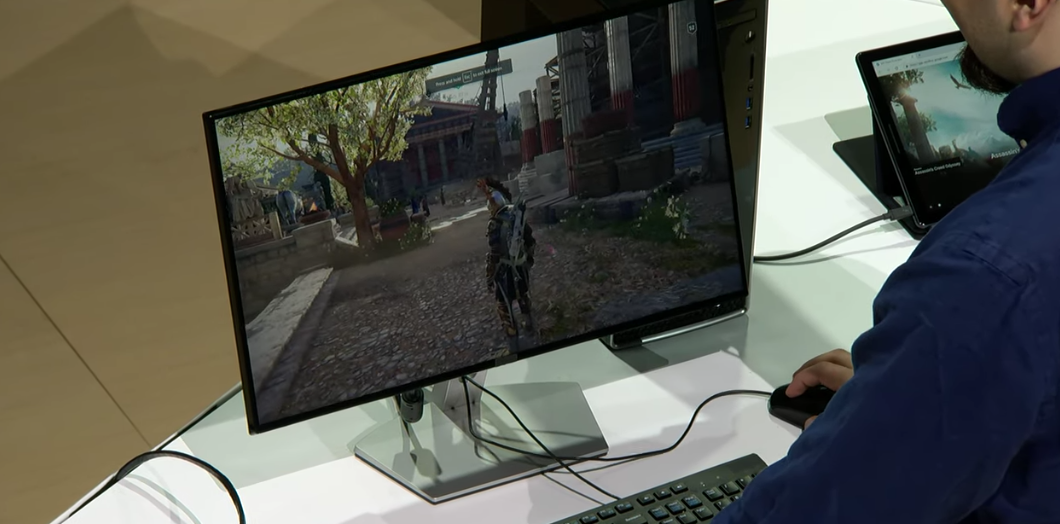Google Announces Stadia Game Streaming Platform, Uses Custom AMD GPUs
Google made waves today at the Game Developers Conference (GDC) in San Francisco with a gaming announcement of its own: Stadia, a streaming game service. Stadia will launch in 2019 in the U.S., Canada, UK and Europe. Google did not share pricing information.
Stadia's architecture uses Google's data center network, which consists of fiber optic links and under-sea cables that have supported Google searches for years with 7,500 edge nodes. At launch, Stadia will support resolutions up to 4K at 60 frames per second (fps) with surround sound. In the future, Google is promising 8K up to 120 fps. It will allow for cross play between systems, run on a data center with custom GPUs and work with a controller that Google is making for the service.
Besides the stream you get, a separate one will be made at 4K and 60 fps to stream to YouTube.
Google worked with AMD to custom design a GPU with more than 10 teraflops of power to handle the service. It will run on Linux and Vulkan and work on the Unreal Engine and Unity. Google said this is more powerful than the Xbox One and PlayStation 4 (PS4) combined.
Google's Phil Harrison, formerly of Xbox, took to stage to detail the service.
Gaming and Streaming on Almost Any Platform
"Our vision is to bring those worlds closer together," Harrison said of gamers, streamers and people who make games. But the ambition of the platform goes beyond streaming Assassin's Creed Odyssey, as the Project Stream test did.
Harrison showed a demo where a user watched a YouTube trailer for Assassin's Creed Odyssey and clicked a play button in the trailer to get the game running immediately in the browser. All you have to do is click on the link to instantly start a game. He also took a dig at games installing slowly on hard drives.
Get Tom's Hardware's best news and in-depth reviews, straight to your inbox.
"A single creative vision and single code base can be enjoyed instantly on any screen," he said, pointing to laptops, desktops, TVs and phones. There is no additional box required.
The company then showed a seamless transition from a Chromebook to a phone to a desktop and then a tablet and a TV over a Chromecast, all at 1080p and 60 fps.
More than 100 development kits have been sent to studios around the world. Additionally, Google is forming its own first-party game studio, Stadia Games and Entertainment, headed up by Jade Raymond, formerly of EA and Ubisoft. That arm of the company will also partner with third-party studios on games and tech, Raymond said on stage.
Developer Tools
Google also announced an initiative to bring split screen to Stadia, each screen powered by separate Stadia instances. This could also be used to pull up the views of your teammates in squad-based games.
Luz Sancho, chairwoman of Tequila Works, came on stage to discuss machine learning for developers. For example, Style Transfer can apply patterns to a game based on images fed to the machine learning tool. Additionally, Q-Games' Dylan Cuthbert was on stage to show off State Share. It shows states like time, health or other conditions that let you set up moments to share and challenge others.
YouTube Streaming
YouTube's head of gaming, Ryan Wyatt, detailed how streamers can use the service. Taking on Twitch, he said "YouTube is where people come to watch gaming."
Streamers will be able to capture directly from Stadia. Additionally, Stadia's new Crowd Play button will let YouTube creators generate lobbies for games to play with YouTubers.
Also with YouTube, players will be able to ask the Google Assistant (with a button on the Stadia Controller) for help, which will bring up YouTube clips of how to beat certain puzzles.
The Stadia Controller
You can use your current fpUSB controller, but Google will have its own: The Stadia Controller. It looks like a mix between a PS4 and Xbox One controller. But it connects through Wi-Fi to the game in the Google data center to ensure the best performance. It also has a share button to stream via YouTube and a Google Assistant Button to use the controller's microphones to get help with features built by developers.
Id Software took to the stage to show off Doom Eternal on Stadia. The game will run at 4K with HDR at 60 fps. Harrison showed how multiple GPUs are more flexible and powerful using the 3DMark Fire Strike benchmark.
Additionally, Harrison said Stadia will embrace platform play, including game saves.
Google CEO Sundar Pichai started the keynote, discussing how gaming has been an important part of Google's research, including using AI, like Google's Deepmind Go, to play games, and using game-like environments in now-sister company WayMo, a self-driving technology firm.
But now, Pichai said they're building a game platform for everyone. Pichai said that Chrome was originally designed for web application and that now it is approaching those goals. He recalled last October's Project Stream, which was a test of Google's ability to stream games at high fidelity and low latency. Games will be on Chrome, Chromebooks, Chromecast and even other browsers in time.
"It was probably the worst kept secret in the industry," Pichai said.
"Beautiful graphics really need high-end consoles or PCs," he said, pointing out that they don't have instant access. He wants to combine game players, people who watch streams and those who make games themselves.
Want to comment on this story? Let us know what you think in the Tom's Hardware Forums.
Image Credits: Google

Andrew E. Freedman is a senior editor at Tom's Hardware focusing on laptops, desktops and gaming. He also keeps up with the latest news. A lover of all things gaming and tech, his previous work has shown up in Tom's Guide, Laptop Mag, Kotaku, PCMag and Complex, among others. Follow him on Threads @FreedmanAE and BlueSky @andrewfreedman.net. You can send him tips on Signal: andrewfreedman.01




